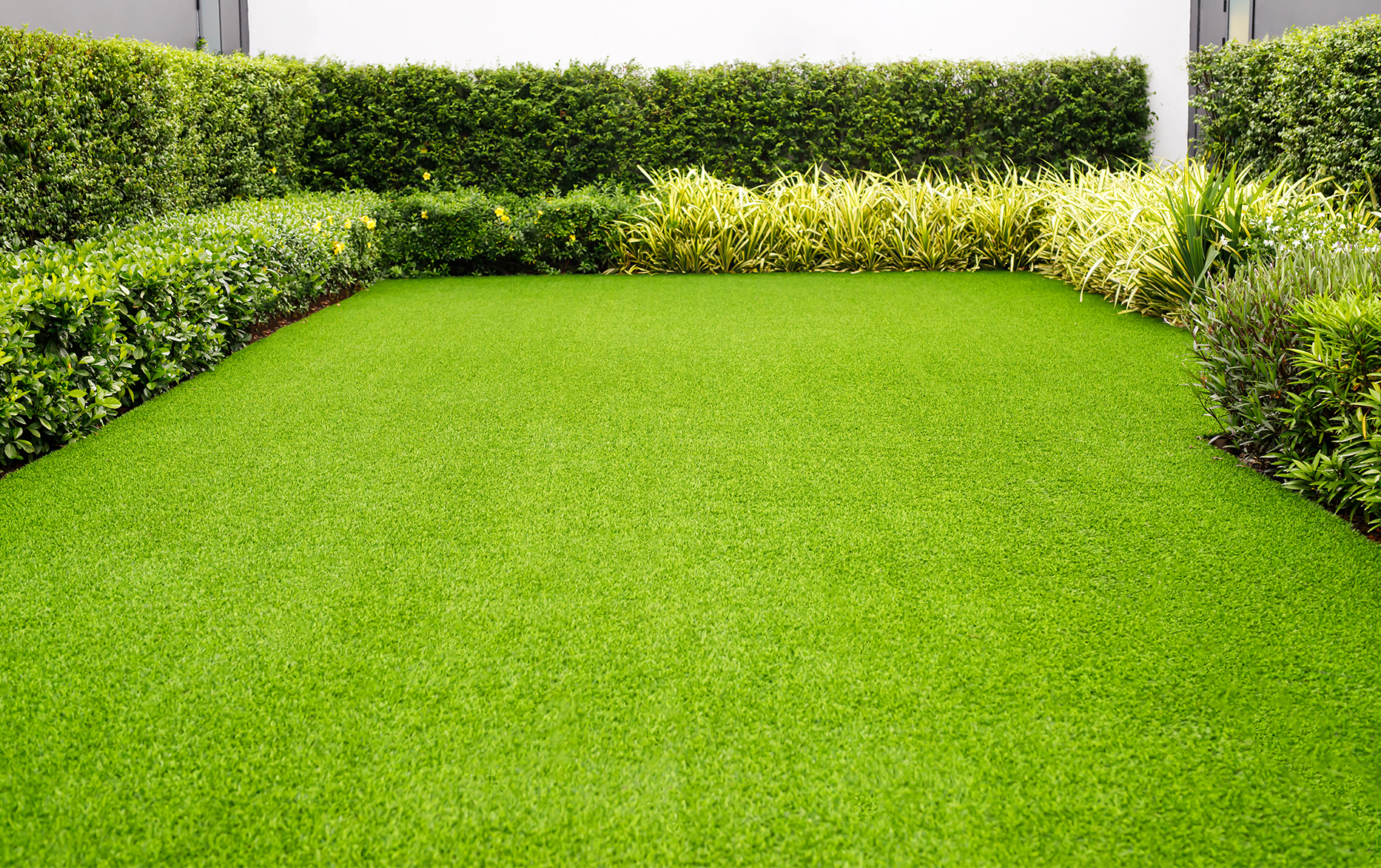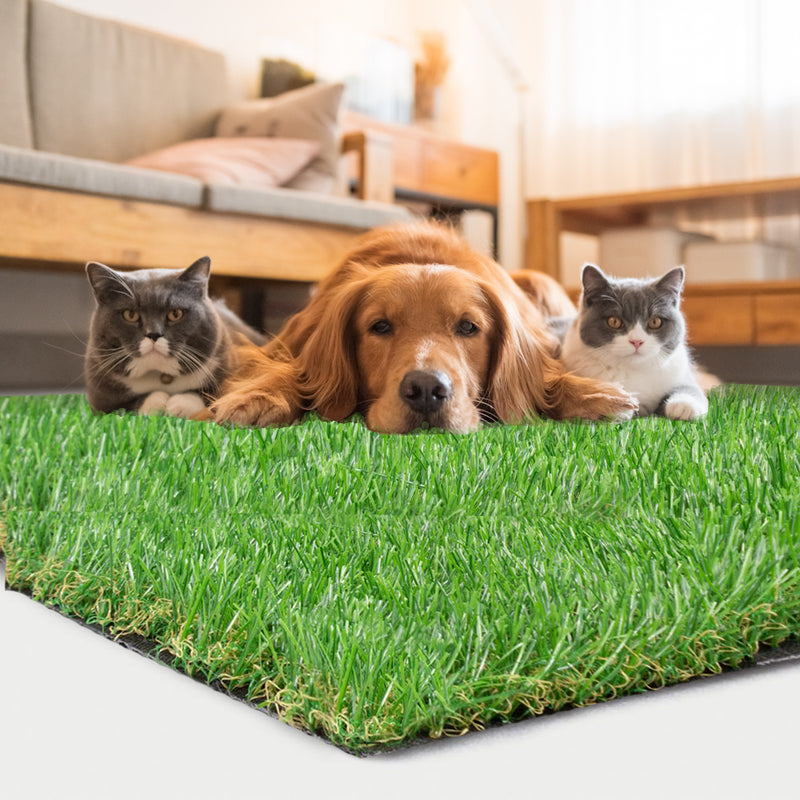Durable Arizona Artificial Turf for Residential and Business Applications
Wiki Article
Explore the Environmental Perks of Opting for Synthetic Grass Solutions
The adoption of fabricated turf solutions offers a compelling possibility to address pressing ecological challenges. By substantially reducing water usage and decreasing the application of unsafe chemicals, these alternatives not only advertise sustainable landscaping however also secure neighborhood environments.Water Preservation Perks
Among the most significant benefits of synthetic grass is its capability to preserve water. Traditional lawn yards need significant watering, especially in locations vulnerable to dry spell or water constraints. In comparison, artificial lawn does not need watering, significantly reducing the overall demand for water sources. This function is especially beneficial in dry areas where water shortage is a pressing concern.By getting rid of the demand for routine watering, synthetic grass adds to sustainable landscape methods and helps mitigate the environmental effect of excessive water usage. Furthermore, the preservation of water includes the reduction of drainage, which can result in dirt erosion and waterway air pollution.
Additionally, the installment of synthetic grass enables districts and home owners to designate water sources more efficiently, concentrating on necessary usages such as alcohol consumption water and farming. The change towards synthetic grass not only advertises liable water use yet also lines up with more comprehensive ecological goals targeted at preserving natural deposits.
As communities progressively focus on sustainability, the water conservation benefits of artificial lawn present a compelling case for its adoption in household and industrial landscaping tasks.
Reduced Chemical Use
The change to synthetic grass considerably decreases the dependence on chemical treatments frequently made use of in natural grass upkeep. Traditional grass administration usually entails the application of herbicides, pesticides, and plant foods to advertise development and control insects. These chemicals can pose dangers to human health, neighborhood wildlife, and the setting, contributing to dirt and water contamination.In comparison, synthetic grass gets rid of the demand for these unsafe compounds. As soon as set up, it requires marginal upkeep, largely containing normal cleaning and seldom infill replenishment. This reduction in chemical use not just profits the immediate atmosphere but likewise contributes to more comprehensive environmental security. By reducing the release of synthetic substances right into the environment, synthetic grass advertises much healthier soil and water supply.
Additionally, the absence of chemical overflow connected with fabricated lawn setups helps protect local rivers from contamination, supporting marine life and maintaining biodiversity. Phoenix turf companies. As areas significantly prioritize sustainable methods, going with synthetic grass provides a feasible option that straightens with environmental preservation objectives. With this shift, home owners can enjoy lush eco-friendly areas without compromising ecological wellness, leading the method for a more lasting future
Reduced Carbon Impact

Furthermore, the installment of synthetic grass can lead to significant water conservation. All-natural grass need substantial quantities of water for irrigation, which not only contributes to the carbon footprint related to water removal and therapy however also strains local water sources. In comparison, synthetic grass needs marginal maintenance, requiring no watering, consequently considerably reducing water usage and its associated energy expenses.
Additionally, the durability of fabricated lawn adds to its reduced carbon impact. With a lifespan of up to 15 years or even more, the demand for constant substitutes click resources is diminished, leading to much less waste and reduced power intake in production and taking care of conventional turf options. In general, synthetic grass offers a lasting choice for eco mindful landscaping.
Habitat Conservation
Environment preservation is a vital consideration in the debate over landscape design choices, particularly when comparing fabricated lawn to all-natural yard. All-natural turf yards commonly call for considerable maintenance, including making use of chemicals, herbicides, and plant foods, which can detrimentally affect regional ecosystems. These chemicals can seep into the dirt and rivers, harming indigenous plants and animals and disrupting local environments.
Fabricated lawn eliminates the need for damaging chemicals, thereby safeguarding neighboring wild animals and preserving the stability of bordering ecological communities. The installation of synthetic lawn can lead to the conversion of previous lawn locations right into even more biodiverse landscapes, such as pollinator yards or indigenous plant locations, which can support regional wild animals.
Eventually, the shift to synthetic grass not just saves water and decreases maintenance initiatives but also fosters an extra unified partnership in between human tasks and the native environment, promoting habitat conservation in the procedure.
Long-Term Sustainability
Long-lasting sustainability is a critical factor in evaluating the benefits of synthetic grass over traditional grass yards. One of the most substantial advantages of man-made turf is its durability; it can last approximately 15-20 years with very little maintenance, whereas all-natural turf requires frequent reseeding and substitute. This durability reduces the requirement for constant sources, such as water, plant foods, and pesticides, which are crucial for preserving a healthy yard lawn.In addition, synthetic grass adds to a decrease in carbon exhausts associated with lawn care tools. Conventional yards commonly require gas-powered mowers, leaners, and blowers, every one of which add to air contamination. Phoenix turf companies. In comparison, synthetic lawn eliminates the demand for such equipment, promoting a cleaner setting
Additionally, the manufacturing of synthetic grass increasingly utilizes recycled materials, improving its sustainability profile. As manufacturers embrace environment-friendly techniques, the ecological footprint of synthetic grass continues to decrease.

Conclusion
The adoption of go to the website man-made grass remedies offers significant environmental advantages, including significant water preservation, lowered dependence on hazardous chemicals, and a lower carbon footprint. Fabricated lawn help in maintaining all-natural habitats by minimizing land disturbance and promoting long-term sustainability via the usage of resilient materials. Collectively, these factors underscore the possibility of man-made grass to contribute positively to ecological health and wellness and provide a feasible option to traditional landscape design methods in a progressively resource-conscious world.In comparison, artificial grass does not require watering, considerably reducing the general demand for water sources. By lessening the release of artificial compounds right into the community, fabricated grass advertises healthier dirt and water systems.
In addition, the installment of artificial lawn can result in substantial water preservation. In comparison, man-made turf needs marginal maintenance, calling for no watering, consequently significantly decreasing water usage and its linked energy expenses.

Report this wiki page